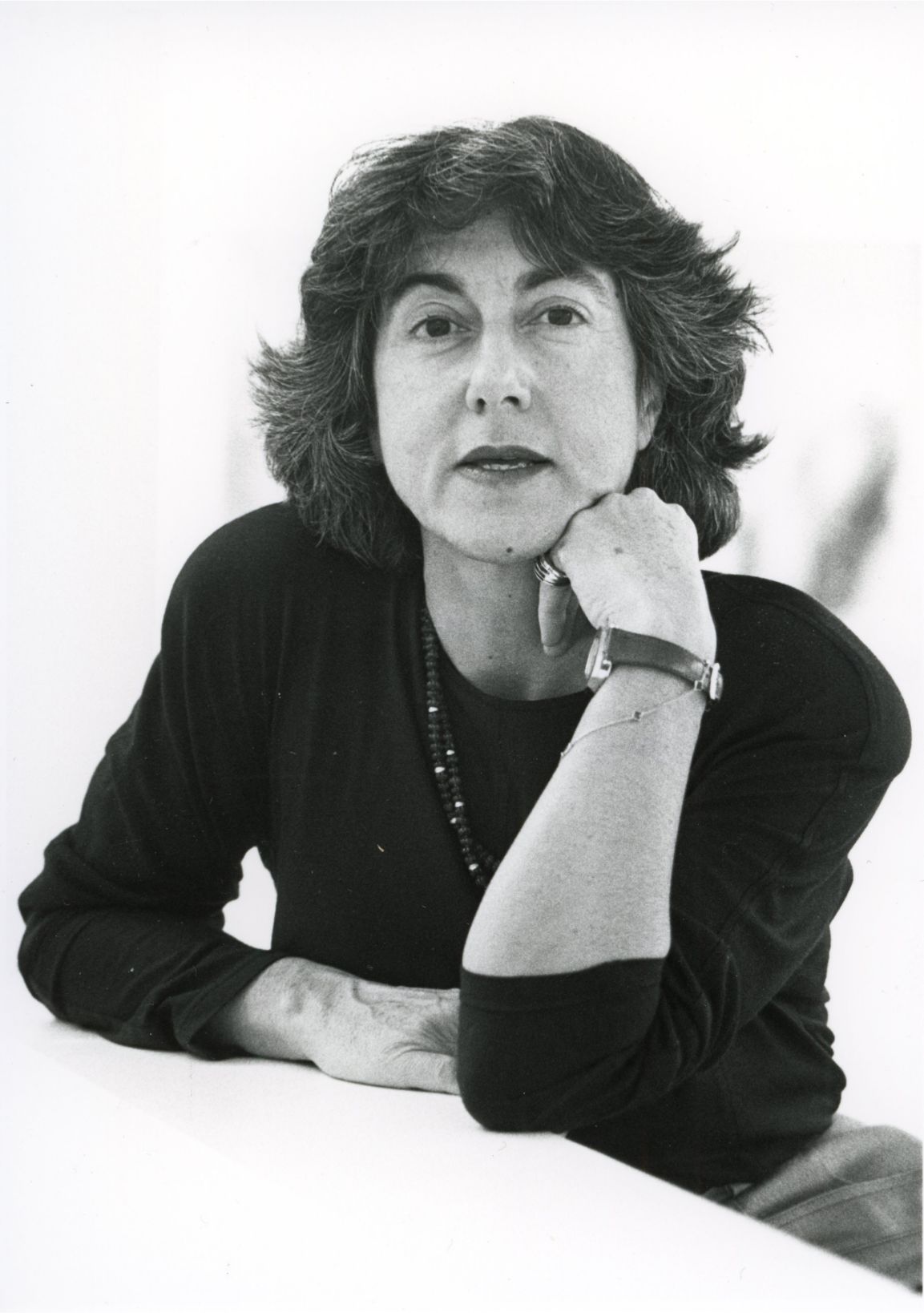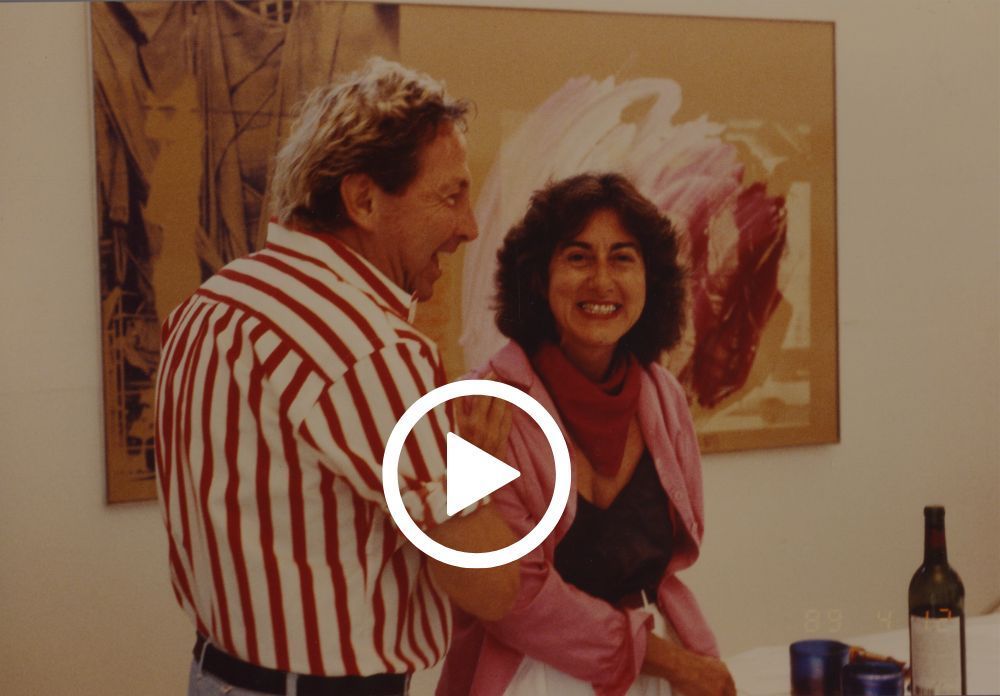Jamileh Weber: art collector and gallerist
For almost five decades, the art collector and gallerist Jamileh Weber played a key role in the international art market with her exhibitions and activities. Her life was a full one, thanks to her passion for art and for art mediation, along with the close friendships that she cultivated with artists. Combining all this with her high quality standards and dedication, she fuelled the emerging interest in contemporary art.
One of the most internationally successful galleries
In 1974, Jamileh Weber opened her gallery on the street Wieslergasse in Höngg, Zurich. Initially, this confident natural gallerist was confronted with strong reservations and resistance. However, by means of exhibitions on international American artists, but also on Georg Baselitz, for example, as well as publications and regular participation in Art Basel from 1978 onwards, Jamileh Weber became internationally recognised in the art world.
Minimal art, pop art and abstract expressionism as focal points
Jamileh Weber went on numerous trips across Europe and the USA, visiting artists and collectors. For many years, she maintained friendly relations with figures such as Robert Rauschenberg, Frank Stella, Roy Lichtenstein, Joel Shapiro and Aldo Rossi. Thus, Jamileh Weber developed a profound understanding of the current international art scene, including really interesting avant-garde works and positions. Her approach was uncomplicated and direct. The gallerist’s inner compass helped her to find her bearings in the increasingly hectic and tough environment of the commercial art market, in which there was more and more talk of ‘art investment’.
Friendship with Robert Rauschenberg
The personal bond between Robert Rauschenberg and Jamileh Weber led to her representing him from 1988 onwards (beginning with the exhibition ‘Paintings and Gluts’) and showing his work in sixteen solo exhibitions in Zurich. Within his network of galleries, which included (among others) Castelli Gallery (in New York), Dwan Gallery, Ace Gallery and Gemini G.E.L. (all in Los Angeles), the Sonnabend Gallery (in Paris / New York), Whitechapel Gallery and the Mayor Gallery (both in London), she was effectively his oeuvre’s continental European representative.
Robert Rauschenberg always made a point of attending the openings in person – first on Hardturmstrasse and later on Waldmannstrasse. He would serve the wine and enjoy the atmosphere that Jamileh Weber created at the shows, as well as at get-togethers with other artists, friends and collectors. For her exhibitions, Rauschenberg designed numerous posters, which are themselves now sold at auctions.
Frank Stella in Zurich
Jamileh Weber not only brought Robert Rauschenberg to Zurich, but also Frank Stella, who died in May 2024. On her prestigious premises, Jamileh Weber first opened a solo exhibition on his most recent works in 1990: large-format, monumental, expressive, dynamic, museum-worthy reliefs with curved forms and bold colours. This was followed by a major show in 2004, featuring the ‘Moby Dick’ and ‘Imaginary Places’ series.
Selecting artists according to her own taste
Jamileh Weber held a prominent position in the art scene: Independent and strongly focussed, she kept her finger on the pulse of the times, always serving the interests of contemporary international artists. She established herself as a driving force behind a collectors’ movement that concentrated on the here and now. What she presented in her gallery was always a very personal choice. The central factor was her taste, rather than that of her customers. Numerous solo and group exhibitions with artists such as Nicola de Maria, Richard Serra, Aldo Rossi, Mimmo Paladino, Rebecca Horn, Sol LeWitt, Jasper Johns, Brice Marden, Joel Shapiro, Roy Lichtenstein, Sean Scully, Edouardo Chillida, Jean Tinguely and Niki de Saint Phalle set the standard for her work as a gallerist.
At Art Basel on 28 occasions
In 1978, four years after founding her gallery, Jamileh Weber went to Basel for her first participation in Art Basel, which had been launched there in 1970. (In 2002, she was also represented at the first edition of Art Basel Miami Beach.) In total, she exhibited 28 times at this international art fair (in 1978 and 1980, and from 1986 to 2011), making her one of the most successful international female gallerists. This also benefited the artists, whom she would subsequently place in leading museums and private collections in the USA, Europe and Asia.
A feminist far ahead of her time
In 1975, Jamileh Weber organised the exhibition ‘Kapelle der holden Widersprüche’ (Chapel of Ineffable Contradictions) with her friend Mario Comensoli. It was a spectacular presentation on the themes of emancipation, feminism and the social role of women in society. In the following year, once again far ahead of her time, she hosted the legendary sensational exhibition ‘Manon presents Men’: a performance installation by Manon (b. Rosemarie Küng, 1940), presenting six types of men (ranging from “very feminine gentle transvestites to the successful guy with an ordinary face, through to the potent brutal SS man” according to the front page of the newspaper ‘Blick’) as erotic exhibition objects in a display window, thus conveying a socio-critical feminist concept of art. Outside her gallery in Höngg, Zurich, visitors queued up to see it.
Jamileh Weber will be remembered as one of the very few courageous and energetic female gallerists who, like Ileana Sonnabend in New York and Denise René in Paris, developed significant positions in the international art market during the 1970s and 1980s.

Contact us
Galerie Jamileh Weber
Management
Ceresstrasse 27
8008 Zurich
Switzerland
Legal notice
Website: germann-communications.ch
Copyright © 2025 Galerie Jamileh Weber




